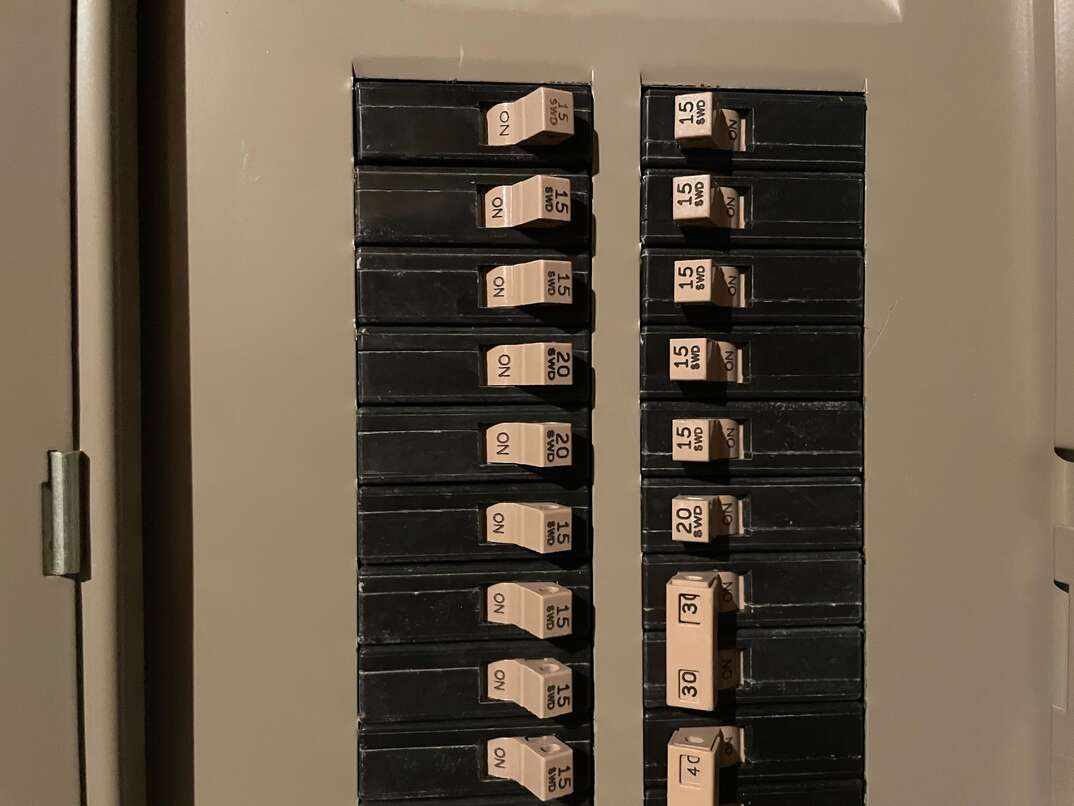- AppliancesElectriciansHVACLandscapingLocksmithPest ControlPlumbingRenovationRoofingT V RepairAll Home Improvement
- Car AccidentClass ActionCorporate LawCriminal DefenseDivorce LawEmployment LawFamily LawFinancial LawLegal AidMedical Injury LawyersMedical MalpracticeReal Estate LawWater Fire RestorationAll Legal
- InvestmentRetirementAll Finance
- Animal InsuranceAutoGeneral InsuranceHealth PolicyHome RentersAll Insurance
- DentalHealth SpecialistsAll Medical
- Animal CareVeterinaryAll Pets
- Auto GlassTowingAll Automotive
What's a Circuit Breaker?

You've probably been there. You might have been cooking up a storm in the kitchen on Thanksgiving morning or trying out a new stereo in the bedroom when suddenly the power goes out for several rooms in your home. The culprit is usually the circuit breaker.
But what is a circuit breaker, and why does it insist on interrupting power to your rooms? Discover more about circuit breakers below.
A circuit breaker is a safety precaution built into modern homes to help protect appliances, homes and people from damage or injury. Technically, the circuit breaker definition is built into the name of this device. It's a device that breaks the current flowing into the home or a certain part of the home under specific circumstances.
What Is the Purpose of a Circuit Breaker?
The purpose of a circuit breaker is to provide protection when the current is stronger or more than expected. The circuit breaker is designed to quickly cut power to a certain circuit — or to the entire home — in cases where potentially unsafe currents are present.
When Does a Circuit Breaker Come Into Play?
There are various scenarios that cause a circuit breaker to turn off power to a home or to part of a home. Some common scenarios include:
- Ground fault surges: This occurs when any source of electricity follows an unintended path to the ground. Miswiring, improper grounding, worn or damaged wires with improper insulation and water pooling around an appliance are all potential reasons for ground fault surges.
- Overloaded circuits: This occurs when various appliances or other items are trying to draw more power from a circuit than the circuit is supposed to provide. Overloaded circuits can create dangerous issues, including fires, which is why circuit breakers are designed to stop this from happening. The most common reason for overloaded circuits is people plugging too many high-power appliances and tools into outlets on the same circuit. This is why many kitchen appliances, such as microwaves, are supposed to have their own circuit.
- Short circuits: Short circuits occur when wires cross or there are other damage or design issues with a circuit. This can also cause fire and other issues. Issues with appliances and electrical components can also lead to short circuits.
More Related Articles
- How Do I Tell If an Electrical Issue Is Serious?
- Can One Bad Outlet Affect Others?
- How to Reset a GFCI Outlet
- What’s in My Electrician’s Van?
- 7 Ways to Save on Your Electric Bill
Each circuit in the home has a switch on the circuit breaker. If the current surpasses what is deemed safe for the circuit in question, the switch on the circuit breaker is "thrown" or tripped. That means the switch flips, causing a break in the wire for that circuit.
Once the break occurs, the circuit is no longer complete. Electricity cannot pass through an incomplete circuit, so the tripped switch on the circuit breaker stops all electricity from passing through that circuit. This is why the power goes out in one area of your home — any area served by that circuit doesn't get power anymore.
To return power, you must go to the electrical panel for your home, find the switch for the circuit in question, and return it to the proper position. Obviously, if you smell smoke, see any evidence of electrical damage or deal with issues all the time with the same circuit, you may want to get a pro in to check out the issue before you turn the power back on to that area.
Where Is Your Circuit Breaker Located?
Electrical panels that house circuit breakers are typically mounted to a wall in an area of your home that doesn't get a lot of traffic. You're unlikely to find it in the kitchen or living room, for example. Look for circuit breakers in basements, utility closets or garages. If your home doesn't have these areas — because you live in an apartment or condo, for example — the panel may be located in a laundry room, pantry or hall. Often, the panel is located behind a small door or cover.
Elocal Editorial Content is for educational and entertainment purposes only. Editorial Content should not be used as a substitute for advice from a licensed professional in your state reviewing your issue. Systems, equipment, issues and circumstances vary. Follow the manufacturer's safety precautions. The opinions, beliefs and viewpoints expressed by the eLocal Editorial Team and other third-party content providers do not necessarily reflect the opinions, beliefs and viewpoints of eLocal or its affiliate companies. Use of the Blog is subject to the
Website Terms and Conditions.The eLocal Editorial Team operates independently of eLocal USA's marketing and sales decisions.



